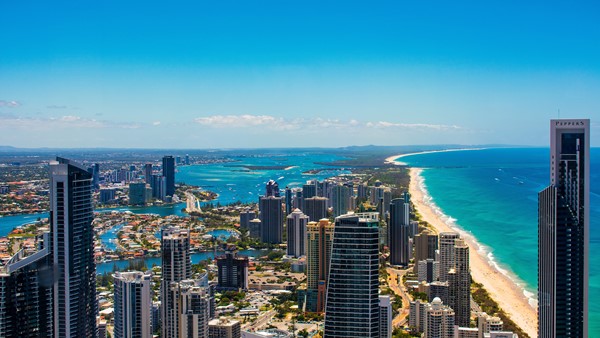When it comes to environmental sustainability, one thing is certain: to stop global warming, carbon emissions must be reduced significantly in order to stop the irreversible impacts on the planet, such as the loss of ecosystems and extinction of some species. In the UK alone, carbon emissions from power, transport and buildings account for 84% of the country’s emissions (source: WWF).
Some habits are easier to change than others, and while the convenience of a car or luxury of an aeroplane might be preferable to many, they are easy things to substitute in order to protect our planet. In the UK, approx. 60% of 1-2 mile trips are made by car (source: UK Government, National Travel Survey: 2018), and it is these kinds of journeys that experts believe are the “low hanging fruit” that could be turned into getting somewhere via foot.
Or bicycle! Many towns and cities now are paving the way – literally – to help people get out on two wheels with bicycle hire and safer cycle lanes. The Netherlands, 26% of journeys are made by bike, followed by Denmark with 18% and Germany on 10% (source: Friends of the Earth, 'Segregated cycleways and e-bikes - the future of urban travel', 2019). Particularly in 2020, where taking public transport is less desirable, being able to get out on your own two wheels or feet is preferable for many.
With that in mind, we look at how language schools can reduce travel-related carbon emissions and the controversial topic of carbon offsetting.
Reduce car use
You know it – cars burning fossil fuels churn out horrible emissions, cause global warming, and pollute the air and damage our lungs.
It’s not OK. Fossil fuels are a finite resource which will run out anyway, and they are a major cause of greenhouse gasses causing climate change. We have to reduce how much we use.
A large 4-wheel drive car being driven fast (e.g. on a motorway) contributes over 2200g of CO2 per mile! In comparison, a small fuel-efficient petrol car being driven at about 60m/hr will only generate about 350g per mile, so what you drive makes a huge difference (source: 'How Bad are Bananas', Mike Berners-Lee, 2010).
Activists want global greenhouse gas (GHG) emissions to drop by half by 2030, then reach net zero around 2050. Some countries have already made their commitments to reach this (including the EU and the UK).
What can we do help make this happen?
Staff in your school travel to and from work, students’ travel to school from their home, and you take business trips.
Any action to reduce the negative environmental impact of these journeys is positive. Could you do any of these things?
- Drive a car less? Walk if it’s a short journey, cycle, or take public transport.
- Start a carpool scheme in the office.
- Offer discounts on city bicycle hire – for staff and students.
- If you have company cars, choose ones with an environmentally friendly footprint.
- Hold video conference events sometimes, rather than always travelling to meet face to face.
- Teach online sometimes, rather than requiring staff and students to always travel to a central location.
Reduce air travel
No doubt, aeroplanes pump out tonnes of greenhouse gasses.
We all work in international education, and many school staff and teachers have careers that involve flying around the world or getting students to fly into our schools. We can’t ignore the fact that air travel is a huge contributor to greenhouse gas emissions. At the moment, electric planes are an engineering pipe-dream. So, we either need to reduce the amount of air travel we do or compensate for the emissions our flights cause.
Often teachers in language schools are visitors from overseas. How can they reduce their environmental impact?
How about flying less often? Embracing the joy of a long-distance rail journey might be a good start. If you are travelling around Europe, virtually any journey is do-able on a train. Not for a weekend or a quick trip admittedly, but integrating into a longer holiday (maybe at the end of the year) could be a good option.
You could always reduce how often you fly. Consider a staycation you can reach via train rather than a holiday that requires travelling thousands of miles via plan. If you’re teaching and working far from home, try to return just once in the year, or stay out for a couple of years without returning. Live life fully where you are, rather than trying to keep one toe based in your home country. If you make even just a couple of small changes, that is doing something – and it’s better than nothing.
Planes are not necessarily the worst thing, however. A full plane carries a lot of people. A large car with just one passenger may generate more emissions. For example, one person on a full aeroplane travelling a journey of 800 miles (for example Paris to Madrid, or Bogota to Quito) will be responsible for 500kg of CO2. If one person drove alone in a large, fuel inefficient, car they may generate double that. If you take some friends, the per person contribution is obviously lower – and they’ll keep you company on a boring long journey! (Source: 'How Bad are Bananas, Mike Berners-Lee, 2010')
So, sometimes, taking a plane may be the right choice.
Carbon offsets
The theory behind carbon offsets is good, but the practice is problematic.
In theory, if you do something to use up an equal amount of carbon that your activities put into the atmosphere, you neutralise the bad effect you are having. The seat on your flight is responsible for 1kg of carbon, so you plant a tree which uses up 1kg of carbon from the atmosphere. Happy days.
The practice of carbon offsets is controversial. There are lots of schemes who will take your charitable donation and plant trees (or whole forests) or do something similar, but there are some drawbacks to this practice, and some people even claim that it doesn’t work.
Tree planting is theoretically effective, but some schemes attract criticism for creating monocultures of just one species of tree which fail to offer a diverse habitat for wildlife; wind and solar power projects are not always welcomed in the local community if they are seen as creating an eyesore; capturing methane gas from waste tips and landfill sites makes sense but it’s not a compelling enough project that encourages people to support it. All schemes have pluses and minuses.
But some carbon offsetting projects definitely are beneficial to some extent. If you want to carbon offset, you should choose certified organisations, who verify that the offsets are monitored for their effectiveness. The key is to check that they are real projects, measurable, independently verified, and permanent, and would not have taken place without the finance provided by the offset credits. Ideally you should check to see whether they offer verified emission reduction (VER) credits, as offered by Gold Standard.
There are many projects to support – you could choose an organisation which shares your personal passions, for example reforestation in a local area which is important to you, supporting indigenous communities, specific projects to do with farming, provision of safe drinking water – or even capturing methane! Or you could trust your airline to monitor the effectiveness of the schemes they support and switch to new schemes if there is any evidence to say old schemes are not effective. Many airlines offer customers the opportunity to pay some extra to offset individual flights at the booking stage.
Whether you like them or loathe them, there is no doubt that companies, individuals, and non-profit groups are now using offsets to go ‘carbon neutral’ or even ‘zero carbon’. Huge worldwide brands such as Disney, Microsoft, Apple and Sony have pledged to use offsets to become carbon neutral.
Some IH schools acknowledge that they rely on students flying from overseas to take classes, and are taking action.
For the 2019 Summer Future Leader’s Course, IH London committed to offsetting flights taken by students. They chose to use UN certified emission reductions (CERs) to fund renewable energy projects. Understanding the importance of education, they gave students the opportunity to decide which charity they wanted to support in offsetting their carbon emissions. And in France, IH Rouen pay for carbon offsets through Air France.
Carbon offsetting is not just to do with flights. Any individuals can calculate the carbon footprint of their regular travel – indeed their everyday life – and choose to offset that. There are some easy calculators on the web, and any number of organisations which offer you a range of projects where you can pay to offset your carbon emissions. The choice is yours.
There is no need to pay into some central scheme. Some companies are just buying land and planting trees themselves. There may be a scheme in your local area which students may want to support and even volunteer for. Maybe there is some land in your city which your municipal authorities would allow students to re-plant. That has the double benefit of a carbon neutralising activity and supporting your local community!
So, be the change: reduce the amount of carbon emissions that your travel causes, and where you can’t, think about offsetting them.
-
Read more about the IH Environmental Sustainability Scheme!
#IHProtectOurPlanet




